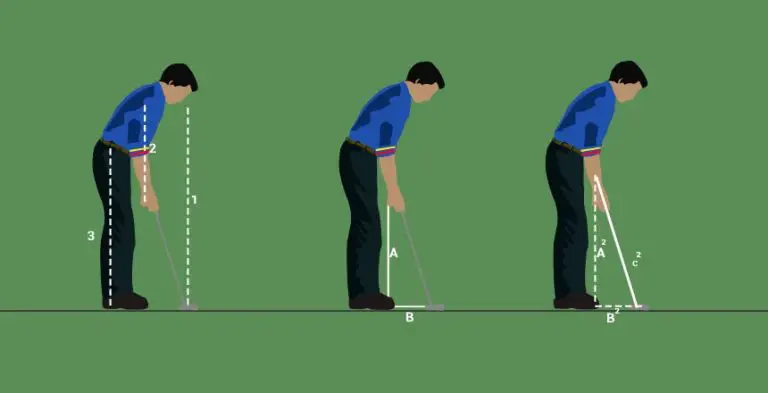What Percentage Of Golfers Are Single Digit Handicap

Golf is a sport that attracts players of all skill levels, from beginners to seasoned professionals. Within the golfing community, achieving a single-digit handicap is regarded as a significant milestone and a testament to a golfer’s proficiency and consistency on the course. But just how many golfers actually reach this elite level of play? In this article, we explore the intriguing question: What percentage of golfers are single-digit handicap?
A single-digit handicap signifies a golfer’s ability to consistently perform at a high level, taking into account the challenges presented by different courses. Golfers with single-digit handicaps possess the skills and knowledge needed to navigate the fairways, avoid hazards, and strategically approach each shot. It is an achievement that requires a combination of technical prowess, mental fortitude, and dedication to improvement.
Understanding the percentage of golfers who attain a single-digit handicap offers insights into the rarity and prestige of this accomplishment. It sheds light on the commitment and effort required to reach this level of play. By exploring the factors that contribute to a lower handicap, we can gain a deeper understanding of the challenges faced and the strategies employed by those who achieve this distinction.
Join us as we delve into the statistical data, examine the factors influencing handicaps, and explore practical tips for golfers aiming to join the ranks of single-digit handicap players. Whether you’re an avid golfer seeking to improve your game or simply intrigued by the intricacies of the sport, this article provides valuable insights into the percentage of golfers who have achieved the coveted status of a single-digit handicap.

What is a handicap in golf?
Before delving into the percentage of golfers with a single-digit handicap, it is essential to understand what a handicap represents in golf. A handicap is a numerical measure of a golfer’s playing ability. It allows players of different skill levels to compete fairly by adjusting the number of strokes they receive during a round. Handicaps enable golfers to compete on an equal footing, even if they have varying levels of skill and experience.
The calculation of a handicap involves numerous factors, including a golfer’s scores from previous rounds, the difficulty rating of the golf courses played, and the course rating. By taking these factors into account, a handicap index is determined, which represents a golfer’s potential playing ability.
What is a single-digit handicap?
A single-digit handicap refers to a golfer whose handicap index falls within the range of 0.0 to 9.9. Golfers with single-digit handicaps are considered highly skilled and proficient players. Achieving a single-digit handicap requires consistency, accuracy, and a deep understanding of the game. Golfers with single-digit handicaps have honed their skills through practice, experience, and a commitment to improvement.
What percentage of golfers have a single-digit handicap?
Now, let’s explore the central question: What percentage of golfers actually have a single-digit handicap? Determining the precise percentage can be challenging due to the diverse nature of the golfing community and the varying skill levels among players. However, we can gather insights from available data and observations within the golfing community.
The percentage of golfers with a single-digit handicap is relatively low compared to the overall population of golfers. Achieving a single-digit handicap requires a combination of talent, dedication, and consistent improvement. As golfers progress in their game and lower their handicap, the percentage of players with single-digit handicaps gradually decreases.
While the exact percentage may vary depending on the data source and the specific golfing population being analyzed, it is generally estimated that approximately 10-20% of golfers achieve a single-digit handicap. This percentage represents a select group of skilled golfers who have demonstrated exceptional proficiency and consistency on the course.
Factors influencing the percentage of golfers with a single-digit handicap
Several factors influence the percentage of golfers who achieve a single-digit handicap. Understanding these factors can provide insights into the challenges and opportunities golfers face in their journey toward a lower handicap. Let’s explore some of the key factors:
Skill level and experience
The skill level and experience of a golfer play a significant role in achieving a single-digit handicap. Golfers with a solid foundation of skills, including proper swing mechanics, effective short game techniques, and strong course management abilities, have a greater chance of attaining a lower handicap.
Experience also plays a crucial role. Seasoned golfers who have accumulated years of playing time, faced different course conditions, and participated in competitive events often have a better understanding of the game and how to navigate various challenges. Their accumulated knowledge and expertise contribute to lowering their handicap.
Practice routine and commitment
Dedication to practice and improvement is vital for golfers aiming to achieve a single-digit handicap. Regular practice sessions focused on honing specific skills, such as putting, driving, or approach shots, can lead to significant improvement over time.
Golfers with a growth mindset and a commitment to continuous learning tend to make more significant strides in their game. They seek opportunities to refine their techniques, seek guidance from golf instructors, and learn from their mistakes. A structured and purposeful practice routine is key to making progress and ultimately achieving a lower handicap.
Course difficulty and playing conditions
The difficulty of the golf courses played and the conditions in which golfers compete can impact their ability to achieve a single-digit handicap. Courses with challenging layouts, complex hazards, and demanding green complexes require golfers to possess advanced shot-making skills and strategic thinking.
The playing conditions, including weather factors like wind and rain, can also influence a golfer’s performance. Adapting to different conditions and adjusting one’s game accordingly is essential for maintaining consistency and lowering one’s handicap.
Strategies for achieving a single-digit handicap
Aspiring golfers who aim to achieve a single-digit handicap can follow certain strategies to enhance their chances of success. Here are some practical tips:
- Consistent Practice: Develop a regular practice routine that includes focused work on different aspects of the game, such as swing mechanics, short game proficiency, and putting.
- Course Management: Learn to effectively manage the course by making strategic decisions based on your skill level and strengths. Play to your strengths and minimize the impact of your weaknesses.
- Seek Professional Guidance: Consider working with a golf instructor or coach who can provide personalized instruction and help you identify areas for improvement.
- Analyze Your Stats: Utilize technology and data analysis tools to track your performance, identify patterns, and pinpoint areas of your game that need attention. This data-driven approach can lead to targeted practice and improvement.
- Mental Game Development: Develop mental resilience and focus on the course. Learn techniques to manage stress, stay present in the moment, and maintain a positive mindset.
- Play Competitive Golf: Participate in competitive events, such as local tournaments or club championships, to challenge yourself and gain experience in a competitive setting.
By combining these strategies with determination, patience, and a passion for improvement, golfers can steadily progress toward achieving a single-digit handicap.
Conclusion
A single-digit handicap is an esteemed accomplishment in the world of golf, demonstrating a golfer’s proficiency, skill, and commitment to improvement. While the exact percentage of golfers with a single-digit handicap may vary, it is a relatively small fraction of the golfing population. Achieving a single-digit handicap requires a combination of talent, practice, and experience.
For golfers aspiring to achieve a single-digit handicap, the journey requires dedication, persistence, and a growth mindset. By following effective strategies, seeking guidance, and remaining focused on continual improvement, golfers can increase their chances of joining the ranks of those with single-digit handicaps. Embrace the challenge, enjoy the process, and watch your game evolve as you strive for excellence on the golf course.






